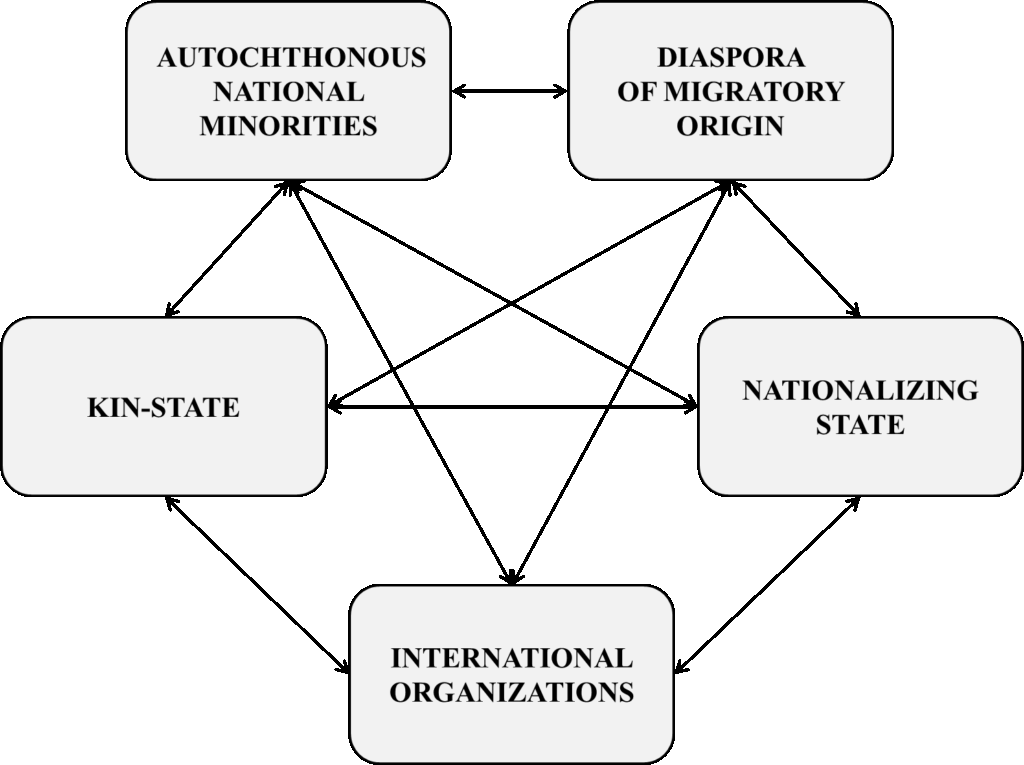Pentagonic Nexus
Rogers Brubaker’s triadic nexus—which links national minorities, nationalizing states, and external national homelands—can also be applied in the field of diaspora studies, but it should be augmented with at least two additional elements. On the one hand, in addition to the diaspora communities, their host states, and kin-states, we should take into account the controlling and regulating role of international organizations (see quadratic nexus). On the other hand, we also need to consider autochthonous kin-minorities, formed as a result of border changes, and diaspora communities of migratory origin as two separate political fields. Their separation is justified by: (1) the different nature of their institutional forms; (2) their relations with the kin-state, on the one hand, and with the host state, on the other; and (3) the interplay between their organizations. A good example of the latter is when the diaspora supports autochthonous co-nationals living beyond the borders of their kin-state, such as when the Hungarian diaspora has supported Hungarian minorities living in the Carpathian Basin. The Hungarian Human Rights Foundation is worth mentioning here. This diaspora organization was established in 1976 in New York with the aim of supporting and protecting the rights of Hungarians living in Czechoslovakia and Romania. In this regard, the significant financial support that Hungarians living in Transcarpathia (western Ukraine) have received from the Hungarian diaspora in Western Europe and overseas can also be mentioned. It is important to note that such models (triadic nexus, quadratic nexus, pentagonic nexus) allow only a general description of the studied social phenomena and systems of relations. They are not suitable for exploring the stratified, plural contents of local identities that determine the existence of a community.

